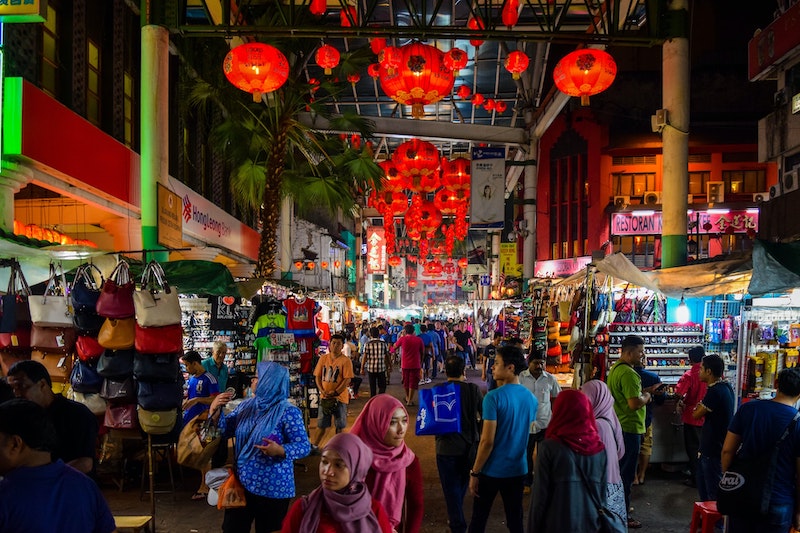Addressing Ethnic Inequality in Malaysia

Malaysia made remarkable success fighting poverty over the past 50 years, dropping from 50% in 1970 to almost zero in 2014, in large part due to the decreased ethnic and racial differences in living standards. The road that the country laid to get there, nevertheless, has regrettably led to widespread racial or ethnic inequality and violence in Malaysia.
The Disparity in Living Standards Between Racial Groups and the 1969 Riot
Since Malaysia’s independence from Britain in 1957, the Bumiputera have maintained their status as the poorest group with the lowest average income, as a result of the British colonial heritage in contrast to the wealthier minority contingent of ethnic Chinese and Indians. After independence, the government gave emphasis on economic development, but until roughly 1970, it seems that policymakers were less concerned with ethnic inequality in Malaysia.
A Sino-Malay race riot broke out in 1969 when new opposition parties led by Malaysian Chinese gained more votes than the multiethnic Alliance party that had been in power since independence. The government’s lack of concern for the country’s pervasive ethnic injustices and the Chinese-dominated party’s win, which appeared to be further detrimental to the living condition of the Malays, were the primary motives behind the riot. Malaysia then declared an emergency and suspended Parliament for two years as a result.
Malaysia’s New Economic Policy (NEP)
The government created the New Economic Policy (NEP) in 1970 as a comprehensive affirmative action strategy in response to the race riot in 1969. Many viewed addressing the enormous racial disparities in the county as essential to accomplishing both its dual goals of eradicating poverty and restructuring society. The NEP officially launched in 1971 and ran for 20 years.
In addition to intending to reduce the poverty rate from 49% to 17% in 1990, the extensive affirmative action favored the Bumiputera by ensuring that they held at least 30% of corporate wealth by that year and that all initial public offerings set aside a 30% share for Bumiputera investors. The Bumiputera were promised preferential treatment when it came to housing, employment opportunities in the public sector, company share ownership and essentially in all other possible fields. By using quotas and university scholarships, the Bumiputera received preference in access to public education.
Next, the objective of greater economic growth allowed the non-Bumiputera sector’s share of the economy to decline while, in absolute terms, allowing non-Bumiputera commercial interests to expand. This was known as the “expanding pie theory” in some circles because it predicted that the Bumiputra share of the pie would grow without the size of the non-Bumiputra pieces of the pie decreasing.
This occurred to help the Bumiputera catch up economically with other Malaysians. To assure this, Malaysia enforced ethnic restrictions on share ownership in public companies. The following eight crucial strategies served as the New Economy Policy’s main drivers.
8 Crucial Strategies that are the New Economy Policy’s Main Drivers
- Deciding on a definition and metric for poverty.
- Raising productivity and enhancing revenue diversity.
- Focusing on the extreme poor through a unique program tailored to their requirements and providing other suitable aid to better their circumstances.
- Engaging NGOs and private sector entities.
- Enhancing the quality of life for the poor by supplying them with social and physical facilities including roads, power, piped water and schools for the rural population.
- Offering welfare support to the poor who were old or crippled and hence unemployed.
- Maintaining stable prices, which included state interference in the markets for a limited range of foods and other necessities.
- Lowering or eliminating the income tax rates for low-income individuals.
The Outcome of NEP
Martin Ravallion wrote in his paper about ethnic inequality and poverty in Malaysia that this country managed ethnic inequality better than many other nations. From 0.51 in 1970 to 0.40 in 2016, the Gini index of household earnings decreased. About 25% of the decline in absolute poverty was due to lower inequality (a pro-poor shift in distribution at a given mean), and the remaining 75% was due to an increase in mean income.
From 4% in 1970 to nearly 20% in 1997, the bumiputras’ share of global wealth increased. The country’s overall wealth increased as well; the per capita GNP increased from RM1,142 in 1970 to RM12,102 in 1997.
Since 1970, the mean income of the poor Bumiputeras has grown more quickly than that of the Chinese or the Indians, but the difference in growth rates has not been sufficient to close the wide absolute differences in mean incomes between racial groups. Relative mean incomes will continue to diverge if the pattern from 1970 to 2016 holds.
Conclusion
Policies that lessen racial disparities, such as affirmative action, can further social objectives besides eradicating poverty, such as encouraging cooperation and social solidarity. The majority status of the poorest ethnic group in Malaysia led to intense political pressure to rectify racial inequity, at least after the loud voices of dissent were heard in 1969. However, it is understandable that poverty reduction in Malaysia is a key metric for gauging the success of virtually any policies, including ethnically-based redistributive initiatives, in a nation like Malaysia, where there are significant racial disparities and an official poverty rate of close to 50% in 1970. While the official poverty rate has nearly reached zero over the same time period, the government has made significant strides in its fight against poverty, although the previous official poverty level is almost probably too low by today’s standards.
– Karisma Maran
Photo: Unsplash
